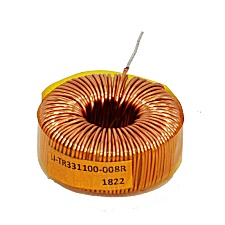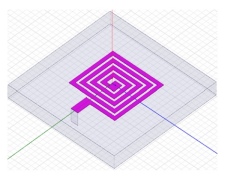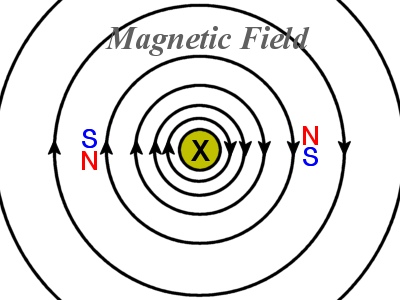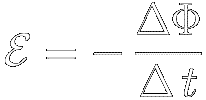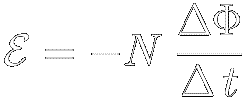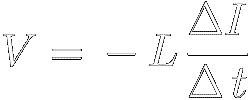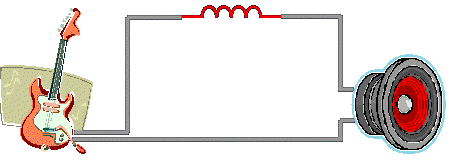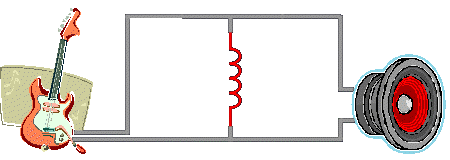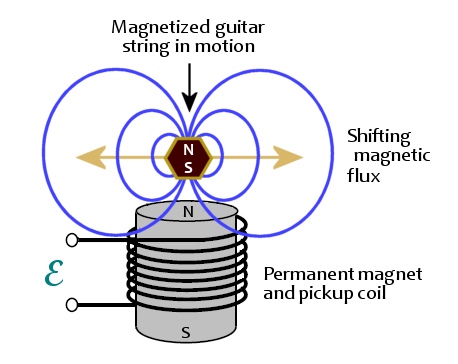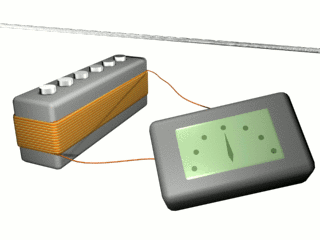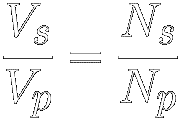|
Where:
V = the induced voltage, in volts
L = the inductance of the coil, in henrys
∆ I ⁄ ∆ t = the current change per
time change, in amps / second
So, an emf of 1 V is generated by a 1 H coil when the current through
the coil changes by
1 A / s.
Inductors for Tone Control
Faraday's Law [1] says
that quick changes in magnetic flux induce more opposing voltage than do slow changes.
In other words, inductors block higher frequency tones more than lower
ones, an effect opposite to that of
capacitors, which block the lower tones more.
Note that an inductor wired in series with a circuit has
an opposite tonal effect to
the same inductor wired in parallel with the circuit :

Series-Wired Inductor
This guitar will sound bassy because only lower frequencies can
go through the coil to the speaker.

Parallel-Wired Inductor
This guitar will sound trebly because lower frequencies can go through the
coil instead of the speaker.
Ampeg® SVT
Inductor Coils
The following coils control tone in Ampeg®
'Super Vacuum Tube' bass guitar amps.
Since the coils are used to mold slow, bass-frequency tones, the
coils' size and inductance must be fairly large.
So, to make the SVT coils more compact, they're bent into toroidal (donut) shapes.

This coil sculpts the tone of a mid-1990's Ampeg SVT-CL
bass guitar amp.

This is the equivalent coil in an original SVT amp from the late
1960's.
Power Supply Chokes
Inductors are often used in amplifier power supplies, following the AC to DC rectification. These
so-called filter chokes smooth out pulsating direct current by
storing and releasing magnetic energy.

This 4 henry choke fits the Fender® Deluxe-Reverb and Vibrolux-Reverb guitar amps.
It also fits Fender® Hot-Rod and Blues Deluxes and
DeVilles.
Guitar Pickups
Guitar pickups use inductance to generate an electric signal from a
magnetic signal.
The magnetic signal comes from a
magnetically permeable
guitar string that vibrates over the pole of a permanent magnet :
Guitar String Pickup
The permanent magnet magnetizes a length of the guitar string and, as
the string vibrates, its shifting magnetic flux cuts across a
pickup coil conveniently wrapped around the magnet.
In keeping with Faraday's Law [1], an
alternating voltage ℰ is induced
in the pickup coil, mimicking the string's motion. This signal
voltage is passed to any
connected gear :
Guitar Pickup Connected to Voltmeter
|

